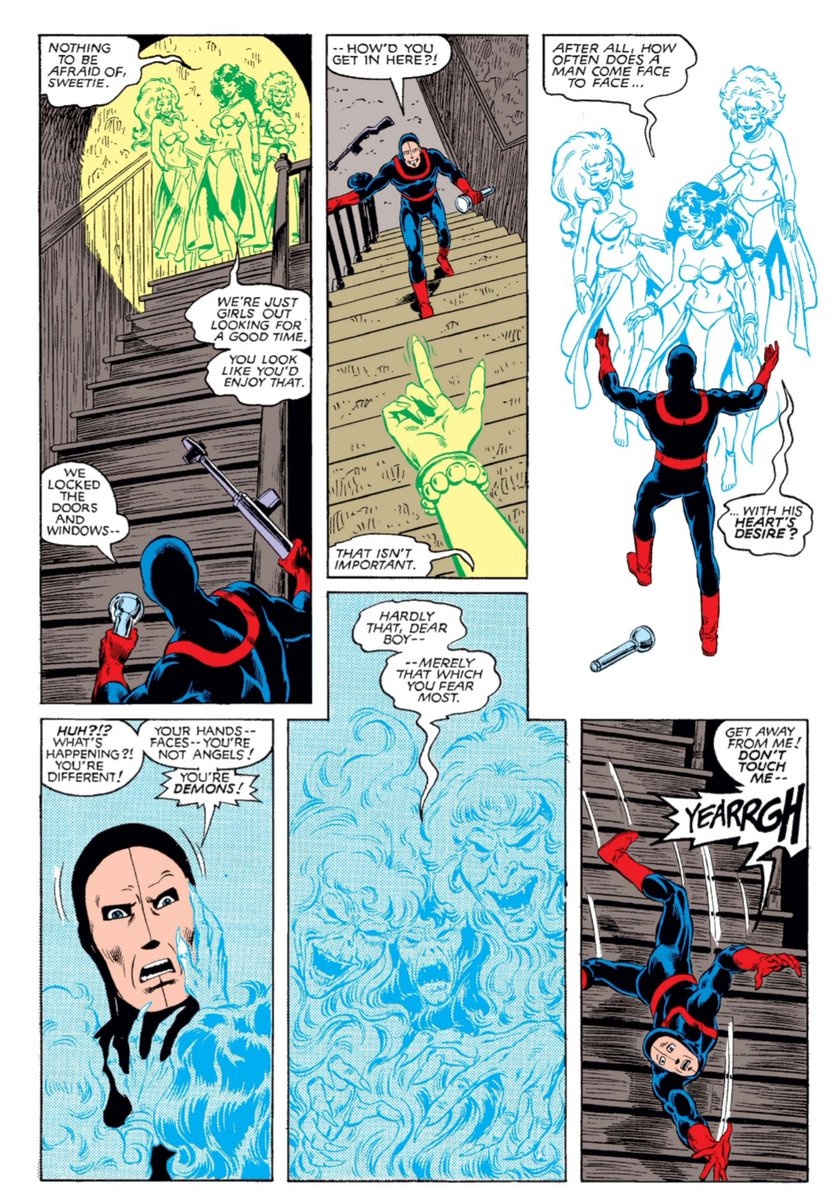The visual dynamism of any given comic is usually ascribed to the talent of the immediate visual team, but having something dynamic to draw is sort of step 1 and, in that light, Bob McLeod’s designs for the New Mutants are genuinely remarkable. #xmen #newmutants 1/7 

With Cannonball, McLeod made the decision to have his legs literally disappear when he’s blasting (by which I obviously mean blastin’). It’s a simple, but very surreal choice that establishes through visual metaphor the synergy between Sam’s body and his eruptions. 2/7 

Dani’s power doesn’t always have a consistent visual language, but the concept of it is carte-blanche for nightmarish horror images in which someone’s worst fear can be sprawled across the panel to dramatic effect whenever needed. 3/7 

Wolfsbane’s power is a sort of tried and true one (especially in the comics medium which has a rich werewolf history) thus allowing illustrators to tap into the infinite lexicon of werewolf imagery that’s out there in order to create dramatic and primal representations. 4/7 

Sunspot is ingenius – a simple silhouette with visible eyes and (usually) surrounding Kirby crackle (aka Kirby dots). It’s elegantly simple, visually efficient, and conveys a sense of mystery, power, and a sort of visual absence that is deeply compelling. 5/7 

This tradition in New Mutants would continue with other creations and other creators, including Warlock, Illyana’s Darkchylde iterations, Magma (co-created by McLeod and Sal Buscema) and, of course, Cable. 6/7 







The point is just that McLeod’s character designs gave him and others a whole lot to work with on the visual level, setting the stage for future visual artists to make or enhance their fame while working on the title, whilst also making the stories themselves more interesting 7/7 

• • •
Missing some Tweet in this thread? You can try to
force a refresh






















